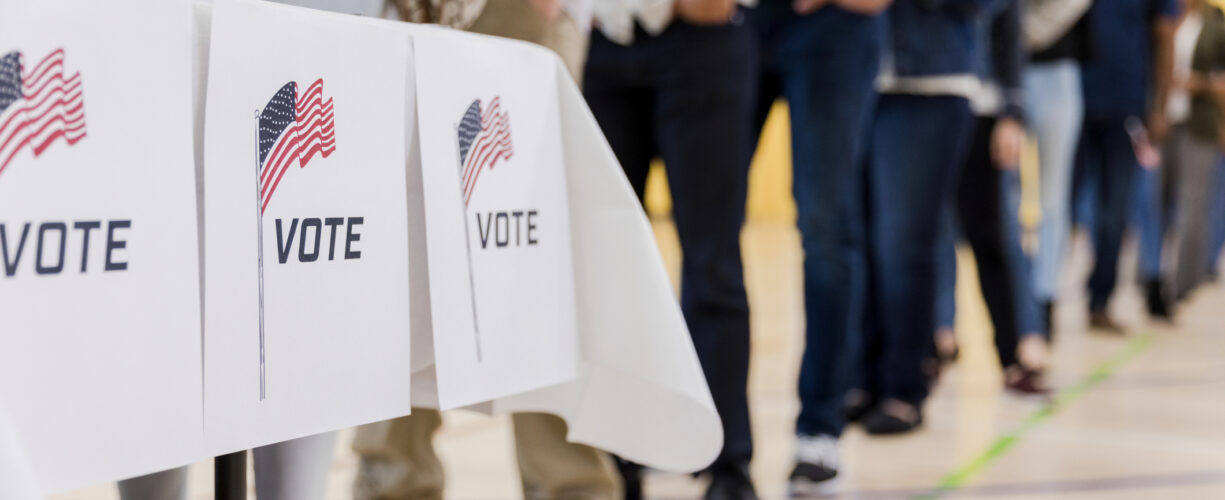Blog: What To Know About Wisconsin Elections

Election Day is approaching, and eligible American citizens will soon be able to exercise their most sacred civic duty. Before November 5, we want to help educate voters and answer common questions so every voter feels confident in our electoral system and empowered to cast their ballot.
Q: Who votes in federal elections?
A: All applicants in Wisconsin are required to verify their citizenship status under penalty of perjury — which carries potential criminal punishments and the risk of deportation — when registering to vote in federal elections. Every voter must meet requirements for eligibility and identity regardless of how they cast their vote.
These identification requirements ensure that only one vote per eligible, registered U.S. voter is counted. Additional measures, such as regularly updating voter registration lists ahead of Election Day and confirming voter eligibility and identity when casting ballots, are carried out to ensure the final election results reflect the will of the people.
Q: How does election certification work?
A: Election certification happens after a rigorous system of checks and balances involving officials from all political parties that confirms election results are accurate. These checks and balances occur at the voting, counting and canvassing stages, so when it is time to certify, there is no question that the results have been correctly tabulated.
Certifying the election results is required by law. Election certifiers play an important role in the election process, but they cannot overrule the will of the people; voters decide who wins by casting their ballots.
Q: What ballot drop box security measures are in place?
A: The Wisconsin Supreme Court has upheld the use of ballot drop boxes as a secure and accessible option for returning ballots in elections. These drop boxes are carefully monitored, often with 24-hour surveillance, to ensure the safety and integrity of the voting process.
Once ballots are dropped off, they are then verified in-house by bipartisan teams under video surveillance and go through a process for acceptance that includes signature verification and examining seals for any signs of tampering. During the process, election officials make sure that each vote is recorded correctly — just like they do for in-person voting at polling places.
Q: What happens once the polls close on Election Day?
A: Impartial officials carefully follow established procedures so exactly one vote per one eligible voter is counted. All ballots — including absentee and early voting ballots — are counted on Election Day, and every vote stays at the polling place until the polls close.
Observers from all political parties keep an eye on the ballots, and a team of trained poll workers never lets the ballots leave their sight as they are transported to a secure counting location. They also ensure no unofficial deliveries are added and no ballots are dropped off anywhere else.
The vote count is checked and rechecked until all officials agree on a final tally. Then, every state in every election double-checks and sometimes triple-checks their final vote count to ensure they are accurate.
Q: Why does it take so long to get an official vote count?
A: The results reported on election night are not the final, certified results. Only election officials can provide the final official election results once all of the ballots are received and counted.
In Wisconsin, state law does not allow election officials to begin counting ballots until 8 a.m. on election day, which includes verifying the voter’s information and eligibility on the mail-in ballot envelope, opening the envelope and removing the ballot so it is ready to be tabulated by a voting machine. All ballots have to be received by your clerk at 8 p.m. on election night to be counted.
This time-intensive process significantly slows down the pace at which election workers can count mail ballots. Because of this, ballot counting may continue for at least a day or two after polls close.
Wisconsin’s elections work because we have tried-and-tested systems in place to make sure votes are cast fairly and tabulated correctly. Whether you send in a mail-in ballot, participate in early voting, or visit your polling place on November 5, you can trust your vote will be safely counted.

